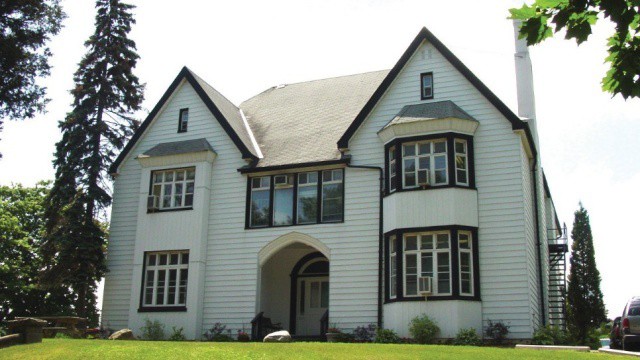Top 5 Oldest Places in Downtown Brampton
Published June 30, 2017 at 5:06 pm

Chinguacousy Township was first surveyed in 1819, settled by immigrants from Brampton, Cumberland, North England. John Elliott applied the name Brampton to the land in 1834, and the city has been through war, hurricanes, and architectural development since.
Out city has a rich history, and if you have an hour and a half, you’ll definitely want to take A Walk Through Time, Brampton’s self-guided downtown heritage walking tour, with 41 stops showcasing the places, stories, and people that influenced Brampton’s development.
The walk guides residents through the oldest establishments in downtown Brampton.
Here are the five oldest places in downtown Brampton, according to the walk.
5) The Boyle House (1860)
Located at Main and Wellington, The Boyle House was owned by The Boyles, one of Brampton’s oldest families. The Boyles operated Boyle’s Drug Store on Main Street North and Boyle’s Book Store on Main Street South, making them pretty prominent in the commerce scene in Brampton. The house itself is influenced by the Second Empire architectural style, and situated between two landmark churches, St. Paul’s United and First Baptist. Robert Boyle was actually the minister at St. Paul’s United for about seven years in the late 1800s – talk about a convenient walk to work.

4) Heggie Block (1860)
This brick building is also a relic from 1860 inspired by the French Second Empire, distinguished by its Mansard roof and arched windows. Doctor David Heggie bought the building in 1897, where he lived and worked as the coroner and physician for the County Jail. Rumour has it that a cell with iron bars was erected in the basement for prisoners awaiting treatment. Now, it houses a Pita Pit.

3) The Old Fire Hall (1854)
Brampton’s first municipal building near Queen Street and Theatre Lane, the Old Fire Hall was originally the village’s market hall and fire engine house, with three archways facing Chapel Street. The second storey was once used as the Village Council Chambers, and the first Brampton Town Council meeting was held in the building in 1874. A 40-foot hose tower was built in 1862 for fire hoses to hang out to dry, and the building held the fire bell. Just prior to WWI is when the building became a fire hall exclusively.

2) The Wright Castle (1853)
Sandwiched between Church Street West and Market Street, The Wright Castle displays High Gothic Revival architecture by William Hay (1818-1888). The castle was built for Brampton businessman and politician George Wright. Originally it had a brick facade, which is now covered by siding. It also lost a rear wing, a side tower, and a belvedere, but it definitely still has character. Subsequent residents of the castle include John A. Thistle, George Williams, J.W. Hewetson, and William Grenville Davis.

1) The Four Corners (1830s)
Brampton has been around since before Confederation, and The Four Corners at Main and Queen have seen it all. The Four Corners began as a crossroads hamlet known as “Buffy’s Corners” after William Buffy’s Tavern, located at the north-east corner of the intersection. Buffy’s Corners then and The Four Corners now, this intersection has remained the heart of downtown Brampton. Lots were sold in the area beginning in 1834, subdivision plans were laid out from 1850-1884, Haggert Foundry, the Dale Estate Nurseries, and the Grand Trunk Railway were introduced in the mid-1800s, and after 1867, civic buildings and homes were built.

For more information on the walking tour and old establishments in downtown Brampton, click here.
insauga's Editorial Standards and Policies advertising





